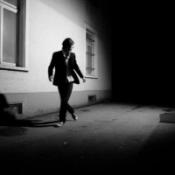 When it comes to knowing ourselves, ideas and mental constructs are overrated. We put too much emphasis on conceptual knowledge and not enough on direct experience.
When it comes to knowing ourselves, ideas and mental constructs are overrated. We put too much emphasis on conceptual knowledge and not enough on direct experience.
While it’s tempting to use only cognitive methods to “figure ourselves out,” when we can let go of the mental stories and rest in direct experience as it unfolds, we challenge the habitual ways we make sense of who we are.
When we see ourselves in this direct way, a response of fear is common; our culture trains us to know ourselves through the mind. But rest assured, this fear is a sign of growth. In order for us to grow, we have to move beyond our familiar sense of who we are and into unknown territory—and our natural response to the unknown is typically fear. If we learn to become comfortable with this fear and stop judging it as a sign of weakness or another negative, we begin to open a door of great discovery and even excitement.
Of course, this is easier said than done. Our habitual ways and defenses are deeply ingrained, and a lot of dedication is needed to move beyond them. Below are some ways to work with the fear that inevitably comes up as we journey inside.
Resting in Not Knowing
It isn’t easy to be with the sensation of not knowing. We tend to either compulsively take action to find answers or avoid situations that trigger the sense of not knowing altogether. What we often miss here is a third option: By staying with the inner experience of not knowing, at the same time fully feeling the desire to know without pushing for an answer, we can experience new levels of self-awareness.
Again, this radical approach isn’t easy. It takes time and practice to develop the capacity to tolerate the experience of not knowing without trying to control it.
Connecting to Aliveness
When we are able to stay with the sensations of insecurity, nervousness, or fear that come from being with the unknown, we also connect with our aliveness. At this point, aliveness and fear can feel like the same thing—but upon further exploration and working skillfully with the uncomfortable sensations of fear, we can begin to discern how excitement is an aliveness different from fear. This sense of aliveness becomes a major player in our development if we learn to trust it, but it requires us to be willing to feel what we encounter in our experience.
Conversely, when we try to deny any part of our inner experience, we only reject parts of ourselves—and this blocks our vitality and joy.
The Body Is Your Ally
If we learn to sense our bodies directly instead of trying to figure things out mentally when we feel a fear of the unknown, we are doing the work. Fear shows itself in many ways, but fundamentally it has a physiological manifestation. If we sense it directly in the body, we develop tolerance for these experiences. When we try to work with fear only at the level of thoughts or even emotions, we are unlikely to deepen in our self-discovery.
For example, say you notice you’re experiencing obsessive thinking about something in the future: you might try to apply a mental solution by appealing to reason, and you may even find temporary relief. However, later on, that anxiety manifests again, perhaps with a different story. What if, instead, you turned toward the body, without ignoring the thoughts, and focused on the actual sensations of the anxiety (e.g., tightness, heavy breathing, vibration, etc.)? You may discover that the sensations themselves, without the attached meaning your mind attributes to them, are more manageable than you think.
Furthermore, you may begin to see there’s a feedback loop between thoughts, emotions, and body sensations. In other words, by understanding the relationship between thinking, feeling, and body sensations, you may see how stories and mental strategies only reinforce the sense of anxiety. This is a liberating insight that can give us the confidence to be with any internal experience.
Don’t Be Afraid of Fear
Fear will inevitably arise when we encounter the unknown, and the more comfortable we become with the different sensations that occur, the easier they may be to navigate. After enough practice, we can begin to recognize that fear is simply a natural response of our nervous system when it encounters the unknown.
If we are not experiencing fear in our lives, we are not growing. We are most likely staying in our comfort zone.
Be Aware of Counterphobic Tendencies
When encountering new layers of fear and defenses, some people tend to dive into these experiences head-on, believing they will “master” the experience. There can be a reckless pushing through with great force that wants to break open the fear and the defenses, but what is behind that movement is fear itself.
Learning to tolerate not knowing and the uncomfortable space that arises when we first encounter new defenses is a practice in itself. The key here is not so much to charge through the experience or break your defenses in a rushed way, but to get in touch with the outer layers of the defense.
Usually what we encounter if we don’t force anything is vulnerability and tenderness. Hanging out in those spaces without trying to change them is the real challenge. Staying open with the parts of you that are terrified—which means being able to slow down and hang out with the vulnerability—is the real brave act, not jumping over it or trying to break through.
For instance, my wife recently confronted me with some patterns of behavior of mine that were affecting her in a negative way. My first reaction was defensive. I was arguing back to her, and I was trying to blame her. As I recognized I was being defensive, I noticed that my chest and solar plexus were contracted. I found myself trying to break open the defensiveness and the contraction. I was trying to force myself to not be defensive.
I recognized I was doing this and that I was in fact being violent toward myself. I took a few breaths, slowed down, and brought in space. With that space, I recognized there was fear and that the fear was pushing the forceful energy. I stayed with the uncomfortableness of the contraction and the mental defensiveness. I simply observed them and felt them without trying to change them. As I allowed the experience, I became more tolerant of it, developed some understanding about it, and bit by bit it dissolved. I was left in an open, spacious, and peaceful state. I was able to see what my wife meant, and I was able to validate her experience and stay open to mine.
Usually what we encounter if we don’t force anything is vulnerability and tenderness. Hanging out in those spaces without trying to change them is the real challenge. Staying open with the parts of you that are terrified—which means being able to slow down and hang out with the vulnerability—is the real brave act, not jumping over it or trying to break through.
In a way, it is more of a challenge to stay with the edges of the experience than to dive in, but if we pull it off, two very important things can happen. First, we build our capacity to tolerate ambiguity and not knowing. In a way, it’s like building endurance by training for a marathon. We don’t push ourselves to run the whole thing when we start training but gradually challenge ourselves more each time. The second thing that can happen is we may uncover related unconscious content from the “bottom up,” instead of figuring it out from a purely mental perspective. In other words, by staying with the outer edges of an experience, memories and mental images can come naturally, without us having to figure out anything.
In my example above, when I felt the chest contraction and observed my mind, I became conscious that my wife’s telling me I was hurting her with my behavior triggered old wounds from my family of origin that did not have to do anything with the current situations. Seeing that allowed me to relax more and not judge my reactivity as bad, but rather to recognize it as a natural response given my past conditioning.
The key here is to stay present and curious in a dynamic and engaged way without pushing and without an agenda. This is not an easy process, and it can take time to develop this receptive attitude. Typically, we need others who have explored the territory before us to help us navigate our inner world.
A Word of Caution
Depending on the level of psychological injury we incurred when we were infants or children, our capacity to relax and tolerate body sensations can be compromised, and we may benefit from therapy. If as young children we were traumatized or chronically neglected in our environment, we may need reparative experiences to heal those deep, early wounds. The level of contraction that early psychological injury creates in the human organism may require a lot of soothing and healing work.
The good news is there are many compassionate therapists who focus on early trauma, wounding, and attachment. It’s imperative that the parts of us that are closed off begin to open in the safety of a compassionate, loving presence.
The Role of the Inner Critic
As we get in touch with the young and vulnerable parts of ourselves, our inner critic may try to persuade us to not continue on this path. It may use all kinds of strategies to steer us away from these places (i.e., “You are so weak!” or, “This is a waste of time!”). So it’s important to recognize when this is happening and work skillfully with the inner critic. It’s also important to recognize the inner critic is a defense motivated by fear.
Although fear can be paralyzing and problematic, and in some cases people may feel stuck or trapped by it, fear can also be seen as a sign of growth. Encountering fear and its associated defensive mechanisms means we are at the edge of our comfortable experience. As we encounter the fear that arises every time we get out of our comfort zone, we can learn to skillfully navigate our inner experience and find deeper levels of peace.

The preceding article was solely written by the author named above. Any views and opinions expressed are not necessarily shared by GoodTherapy.org. Questions or concerns about the preceding article can be directed to the author or posted as a comment below.

 You Need Therapy, but Not for the Reasons You Might Think
You Need Therapy, but Not for the Reasons You Might Think Bias in the Brain: Overcoming Our Unconscious Prejudices
Bias in the Brain: Overcoming Our Unconscious Prejudices Trauma Recovery: Unlinking Fear and Danger in the Brain
Trauma Recovery: Unlinking Fear and Danger in the Brain

